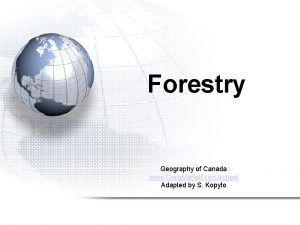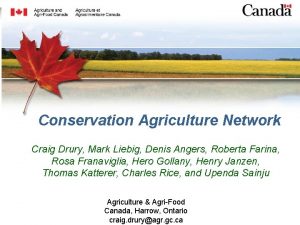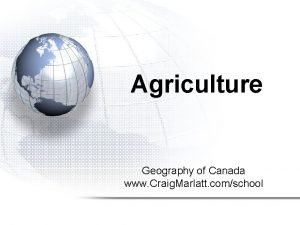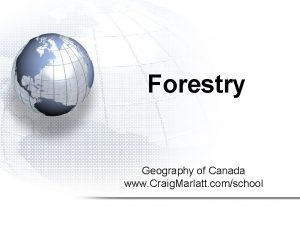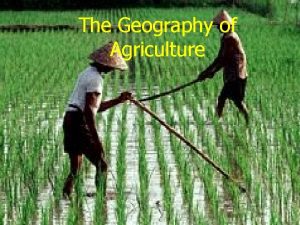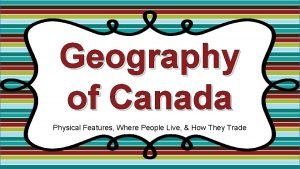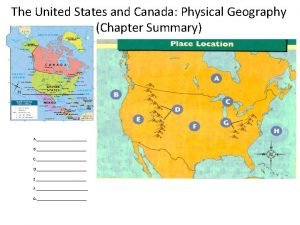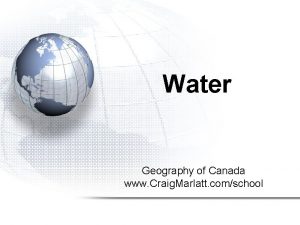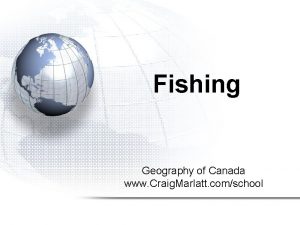Agriculture Geography of Canada www Craig Marlatt comschool










- Slides: 10

Agriculture Geography of Canada www. Craig. Marlatt. com/school

Agriculture 1. Canada’s Agricultural Resource 2. Disappearing Farmland

Canada’s Agricultural Resource • There are five major agricultural production sectors in Canada. They are…. . – grains & oilseeds (wheat, oats, rye, flax seed, canola, soybeans, and corn ) 34% – red meats (beef, hog, veal, lamb) 27% – dairy 12 % – horticulture 9% – poultry and eggs 8%

Canada’s Agricultural Resource • Horticulture, poultry & eggs, and dairy are all produced with a domestic orientation – they stay in Canada • Grain and oilseeds & red meat both have a domestic and export orientation – sometimes they stay and sometimes they go

Disappearing Farmland • “On a clear day, you can see most of the best farmland in Ontario from the top of the CN Tower. On a quiet day, you can almost hear that land being paved over. ” • Basic Facts – 37% of Class 1 land in Canada is within view of the CN Tower. – 20% of Class 2 land in Canada is within view of the CN Tower. – 43% of the value of agricultural production in Canada lies within 80 kilometres of 22 different cities.

Disappearing Farmland • Canadian Land Inventory – the amount of Class 1 land in all of Canada is less than the size of New Brunswick (0. 5% of Canada’s land surface – 4. 2 million hectares) – only 11% of Canada’s land surface is capable of agriculture of some kind – 50% of the Class 1 land in Canada is located in Ontario, BUT – Ontario has the greatest degree of urbanization in Canada

Disappearing Farmland • Class 1 land: no significant limitations to crops • Class 2 land: moderate limitations that require good conservation practices • Class 3 land: severe limitations

Disappearing Farmland • On the next slide is a typical limited access highway, where concession and sideroads do not link up to paved highways. • The highway runs through a rich farming area of southern Ontario, 5 kilometres outside of a city of 150 000 people. • Answer the questions as they arise.

Disappearing Farmland 1. How many farms in this rural concession are untouched by the new highway? 2. If each farm is 100 acres in size, what percentage or fraction of Farm “A” is used up for the highway construction? How much of Farm “I” is used up for the highway?

Disappearing Farmland 3. How does farmer “A” reach the part of the farm on the other side of the highway? How does farmer “B” reach the other part of his farm? 4. If you were farmers “C” or “H”, what would you try to do with the fragmented pieces of farmland you owned? 5. What possible futures are in store for farms “I” and “J”?
